10 CT Companies Are Finalists at Entrepreneur Innovation Awards, Three Receive Funds to Boost Growth
/Fledgling entrepreneurial businesses in West Hartford, New Haven and Marlborough will be getting a financial boost in their efforts to gain a foothold in their respective industries. CTNext, Connecticut’s go-to resource for entrepreneurial support, announced the three winners of the most recent Entrepreneur Innovation Awards (EIA), held this month at the Connecticut Historical Society in Hartford.
The finalists, Connecticut-based companies and entrepreneurs, presented their innovative project ideas to a panel of entrepreneurial experts for an opportunity to secure $10,000 awards to help support business growth. The top winners, to receive $10,000 awards, were:
- GinzVelo Hybrid Electric Cycles (West Hartford): A personal transportation solution powered by pedaling or the electric motor to effortlessly travel up to 100 miles to and from your destination.
- Sweetflexx (Marlborough): Resistance technology active wear enables muscles to work more efficiently, resulting in a higher rate of calorie burn. McCullough Shriver founded Sweetflexx. (see video below)
- Verb Energy Manufacturing (New Haven): A healthy, caffeinated, energy bar that combines your cup of coffee and an energy bar for less cost. Verb Energy was founded in 2016 by four Yale students.
The “judges’ favorite” went to Sweetflexx, and the “crowd favorite” was awarded to Verb Energy. Each business will receive an additional $2,000.
The other finalists included:
- Global Hydro Pneumatic High Tech Inventions (Shelton) Developing an all-wheel hydraulic power jack system that is safer and less damaging to cars.
- Loki (Woodbridge) Creating an app that gives users control over their own multi-perspective visual experience.
- Mobile Sense Technologies (Farmington) Engineering an “off-the-chest” ECG monitor for 24/7 management of cardiac arrhythmias.
- Obvia (West Hartford) Creating a lightweight, dual-winglet blade for small to mid-sized wind turbines that is both energy- and cost-efficient.
- Olie Robotics (Manchester) Building a professional robotic vacuum that cleans offices at a third of the cost with no labor hassles.
- PennSMART (North Branford) Producing a universal retrofit for lighting fixtures that allows surveillance and sends alert notifications.
- Trekeffect (Niantic) Creating an app that allows individuals to sell their travel itineraries.
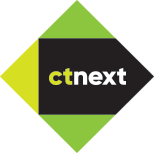 “The Entrepreneur Innovation Awards seek to give new and growing companies the support they need to thrive,” said Glendowlyn Thames, executive director of CTNext. “Through these events, we have seen a number of incredible companies that are changing their respective industries and creating a positive economic impact in our state. These grants continue to support companies at the earliest stages of growth and to drive them to the next level of development.”
“The Entrepreneur Innovation Awards seek to give new and growing companies the support they need to thrive,” said Glendowlyn Thames, executive director of CTNext. “Through these events, we have seen a number of incredible companies that are changing their respective industries and creating a positive economic impact in our state. These grants continue to support companies at the earliest stages of growth and to drive them to the next level of development.”
To be eligible for an EIA, startups must be Connecticut-based, registered as CTNext members, and looking to conduct growth-related activities to help advance their business. Project examples include but are not limited to prototyping, performance testing, compliance testing, product or service development, market research, licensing and more.
A full list of criteria can be found on the application page. For more information on the program or to apply, please visit: http://ctnext.com/entrepreneur-innovation-awards/. CTNext launched in 2012 and has more than 1,500 members in its network, since initiating the awards program in February 2014 CTNext has awarded $544,000 to 52 companies.
The goal of CTNext is to build a more robust community of entrepreneurs and to accelerate startup growth by providing access to talent, space, industry expertise, services, skill development and capital to foster innovation and create jobs for people in Connecticut.
https://youtu.be/f7AxJz-KsUA





 Lowest
Lowest 
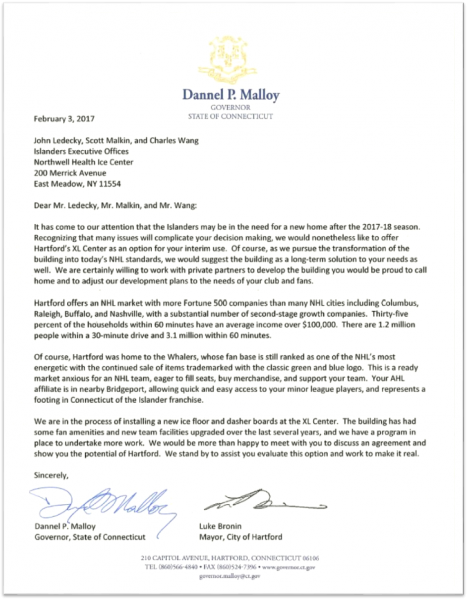


 Published
Published  Back in 2013, the state Bond Commission approved $1 million in borrowing to help an emergency home repair company move its headquarters from Stamford to Norwalk. The bonding was aimed at assisting the
Back in 2013, the state Bond Commission approved $1 million in borrowing to help an emergency home repair company move its headquarters from Stamford to Norwalk. The bonding was aimed at assisting the 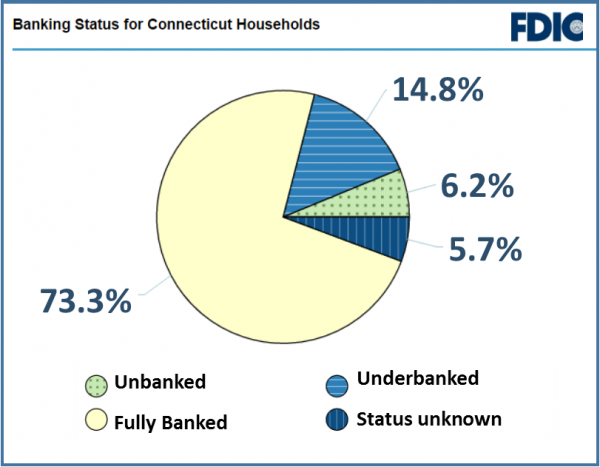
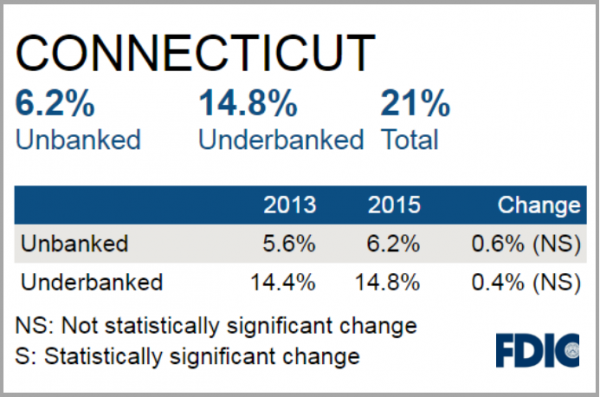




 In 12 states, including Connecticut, average debt was more than $30,000 – up from six states the year before. High-debt states remain concentrated in the Northeast and Midwest, with low-debt states mainly in the West. Average debt at the college level varies even more, from a low of $3,000 to a high of $53,000, and the share graduating with loans ranges from seven percent to 100 percent.
In 12 states, including Connecticut, average debt was more than $30,000 – up from six states the year before. High-debt states remain concentrated in the Northeast and Midwest, with low-debt states mainly in the West. Average debt at the college level varies even more, from a low of $3,000 to a high of $53,000, and the share graduating with loans ranges from seven percent to 100 percent.
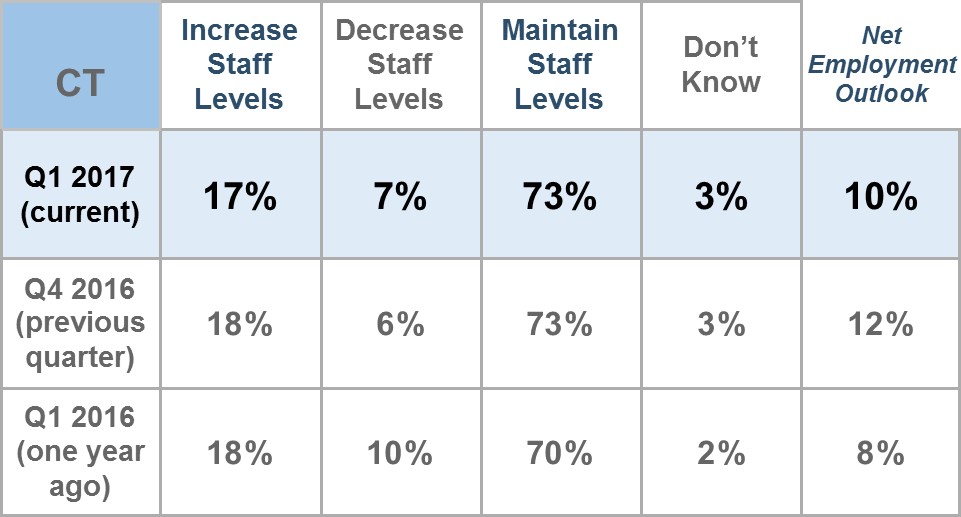 From January to March, 17 percent of Connecticut companies interviewed plan to hire more employees, while 7 percent expect to reduce their payrolls. Another 73 percent expect to maintain their current workforce levels and 3 percent are not certain of their hiring plans. This yields a Net Employment Outlook* of 10 percent.
From January to March, 17 percent of Connecticut companies interviewed plan to hire more employees, while 7 percent expect to reduce their payrolls. Another 73 percent expect to maintain their current workforce levels and 3 percent are not certain of their hiring plans. This yields a Net Employment Outlook* of 10 percent.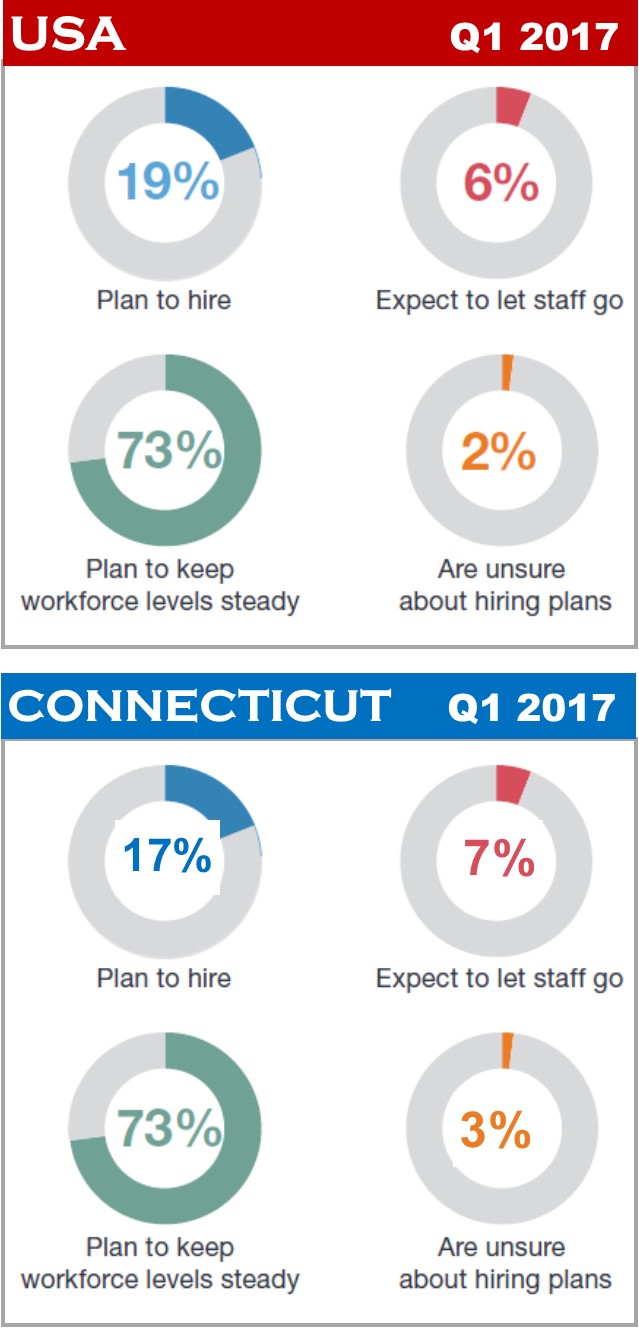 formation and Other Services plan to reduce staffing levels.
formation and Other Services plan to reduce staffing levels.



























